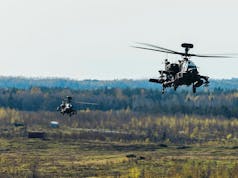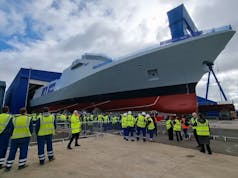Boeing has announced the early completion and delivery of the first two Service Life Modification (SLM) F/A-18 Block III Super Hornets to the U.S. Navy, according to a press release from the company on June 27, 2024.
These upgraded jets were delivered one month ahead of schedule from St. Louis and two months ahead from San Antonio, offering the same capabilities as new-build production line Super Hornets.
Faye Dixon, Boeing’s SLM director, stated in the press release, “Our success in meeting the accelerated timeline is proof our service life modification game plan is working. Thanks to our years of learning on the program and our partnership with the Navy, the F/A-18 Super Hornet remains at the forefront of defence technology with renewed years of service to support the fleet.”
Boeing’s productivity improvements and efficient processes have allowed the company to complete Block III upgrades ahead of the 15-month contract requirement.
Key factors, say the firm, contributing to this achievement include establishing a baseline for the condition of Block II F/A-18s received at Boeing, and the Navy’s preparatory work on the jets. Additionally, sharing information and best practices across multiple SLM sites has enhanced efficiency, managed workload distribution, and optimised resource allocation.
Mark Sears, Boeing Fighters vice president, was quoted in the press release saying, “Great measures were taken by the Boeing and Navy teams to ensure these are the safest and most capable Block III F/A-18s we can give our warfighters. These are just the first of many deliveries, with around 15 years of SLM deliveries to go. Our warfighters are counting on us to get this right every time.”
The Block III upgrades include a large area display and enhanced computing capabilities through Tactical Targeting Network Technology and a Distributed Targeting Processor-Networked open mission systems processor. The upgrade work is conducted at Boeing’s St. Louis and San Antonio sites, as well as the Navy’s Fleet Readiness Center Southwest in San Diego.
In March, Boeing and the Fleet Readiness Center Southwest signed a Public-Private Partnership agreement to expand the work scope at the command. This agreement allows the readiness centre to perform the same Block III SLM work as Boeing’s facilities in St. Louis and San Antonio.
“These first deliveries of Block III SLM jets are a major milestone in our continued efforts to ensure capability, reliability, availability and maintainability of the Super Hornet aircraft,” said Capt. Michael Burks, programme manager for the F/A-18 and EA-18G Program Office, in the press release.
“We look forward to our continued partnership with Boeing to deliver this critical warfighting capability to the fleet.”
We aim to deliver accurate and timely news on defence matters at the UK Defence Journal. We rely on the support of readers like you to maintain our independence and high-quality journalism. Please consider making a one-off donation to help us continue our work. Click here to donate. Thank you for your support!
To sign up for our newsletter, click here














I
It could well be with the cancelation of NGAD coming that GCAP Tempest will suddenly become the worlds premier fighter aircraft.
I wonder if we will see the USAF make moves to acquire more 4.5 Gen aircraft like F15 EX.
NGAD will not get cancelled. It’s all budget postering and maneuvering that happens every year.
Sounds very much like they want a new program to me. I think they probably went too high end and too much like a bomber when the air force really wants something much more like an F22 for the $150 million mark.
I think you might be right in that they’re still conflicted on the requirements. They know they need something with longer legs for a likely pacific fight but that most likely involves tradeoffs that impacts it’s “air dominance” fighter performance.
Believe you are correct that USAF desires sixth gen air dominance w/ long legs for Indo-Pacific, for ideally, a F-35 pricetag. However, the projected $300+M/copy (inevitably heading north) will not permit the purchase of a sufficiently large fleet w/in a reasonable timeframe. Suspect that after much analysis and hand wringing, the final USAF sol’n may well be the adoption of the British model of acquisition, w/ the purchase of a/c occurring ever so sloooowwwwly…🤔😳😉
Fortunately, while this particular melodrama is unfolding, USAF will also update a majority of the F-22s, and continue scheduled purchases of F-35As and additional F-15EXs. Similarly, USN will be acquiring F-35C and upgrading F/A-18 Super Hornets, as described in article. Ops will proceed, as per usual. 😊
👌👌
Personally I think the airforce and navy will get their knuckles rapped by the trump administration and to stop trying to develop two separate 6 generation fights and they will have NGAD and FAXX merged…I don’t think even the U.S. can really afford to piss the money away to develop 2 separate 6th generation fighters..just because both the airforce and navy think they are each a special case.
They have cut the order for F15EX.
Yes but they might increase in future if NGAD is cancelled or delayed.
just this month they announced an order for 24 more to bring the numbers to 104. the national guard is asking for more so i wont be surprised if they reach the original goal of 144.
and as for NGAD it looks like something they have a history of which is threatening to cancel something unless they are given more money- which they most certainly will. but there is a lot of speculation that the B-21 will be used for long range anti air- mysterious smaller bays (guessed to be weapons bays) can be seen spotted flanking the main bomb bay. very possible they will stick AIM-260s in there.
with the stealth and other defensive features they are probably confident it won’t end up in a dog fight- but even if it did there are lots of air to air laser projects being tested. which would make high maneuverability pointless in a dog fight. the lasers will also be used to shoot down incoming missiles. the more i think about it the more i think a large bomber sized aircraft with massive range makes a lot more sense than something F-22 sized (and its relatively small range in the pacific. you could have B-21s stationed outside the range of any chinese missile short of ICBMs.
As with all large defence projects. Navigating the politics is as important as the technical design and development. You always get the doom and gloom threats from military leaders as ways to help secure funding.
I just don’t think the U.S. can afford to develop two separate 6 generation fighters, I thing the navy and airforce will be taken into a room and told to sort their lives and and develop one between them.
How would F15 EX cope against Typhoon T4 🤔
The pilot and the situation would decide.
I hope the Navy does thorough testing before accepting delivery. Wouldn’t want parts falling off 😊
So, how’s the F-35C coming along?
they’re getting a lot more common on pacific fleet carries. i believe plans are for 275- im not sure if that includes USMC numbers. they’ve been purposefully slow rolling purchases as the carriers have to have upgrades to operate them and they are doing those upgrades during planned heavy maintenance/drydock periods. the navy also has a lot of newer F-18 superhornets so they aren’t in a panic to add F-35s like the USMC needing to replace old harriers (the USMC falls under the department of the navy so procurement funds comes from the navy.
The USN number of ~ 273 aircraft (F-35C) does not include the ~ 80 F-35C, or obviously the 353 F-35B, that the USMC is procuring.
What are they doing about F35C squadron sizes now ? Are the marines and navy going to have parity of squadron size ?